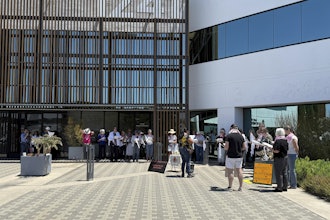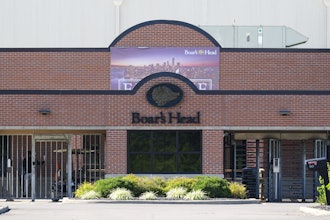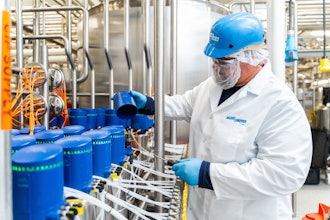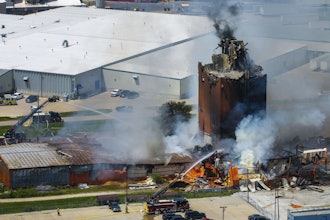
Workplace injuries are always on the radar of manufacturing companies. Strains, slips and falls can easily escalate into seven-figure medical and lost-time claims. With ongoing labor shortages, the need to avoid having workers sidelined by preventable injuries is even more urgent.
Artificial Intelligence (AI) is a powerful ally to employers in this endeavor. Smart software can monitor equipment and alert management immediately to potential problems, such as a machine guard failure. It sharpens the ability to conduct preventive maintenance on machinery, heading off safety issues and keeping productivity humming along.
Generations of AI-equipped wearables have led to breakthroughs in ergonomic safety. These devices alert workers immediately when their high-risk posture or lifting style could lead to injury - reducing high-risk postures as much as 50 percent. Notably, their effectiveness rests on “compliance” from both employees and employers. Employees must wear the devices regularly and ensure they are maintained properly. Once detected, potentially dangerous activity must be addressed by training and education, the employee’s own initiative, or both.
The New Frontier
Now comes the latest - and potentially greatest – AI advancement in facilitating workplace safety: computer vision.
Fueled by AI software, onsite video cameras have the versatility to convert existing camera systems into smart cameras, which can help detect and alert managers in real time to potential manufacturing safety issues. Maintaining constant vigilance, these smart cameras see and identify not only ergonomic hazards, but the entirety of the work environment, flagging near misses, Personal Protective Equipment (PPE) issues, line-of-sight risks and other hazards.
While keeping a comprehensive watch on safety, they also allow employers to collect data across the spectrum of workplace hazards and injuries so they can continually hone safety plans and practices to prevent incidents. This is real-time risk management, which is leaps-and-bounds progress over the previous standard of mining video camera footage reactively, after an accident or injury occurs.
The results are very positive. Voxel, one company that specializes in computer vision technology, has tracked substantial progress by users of its smart cameras. Over-reaching was reduced 92 percent and improper lifting declined 69 percent at one retailer. A lumber supplier saw a 79 percent decrease in ergonomic incidents over a six-month period. A heavily trafficked facility recorded an 86 percent reduction in vehicle accidents.
AI-driven tools offer “softer” benefits, as well. Both wearables and computer vision can lead to increased productivity and efficiency. They also enable employers to more efficiently and effectively onboard, train and supervise new workers. An added benefit is that implementing computer vision software integrates with security cameras most facilities already have in place.
Strengthening Insurer-Insured Partnerships
Many insurance carriers are adding AI-driven resources to their toolboxes to help manufacturers drive down the cost of employee injury and lost productivity. In the workers’ compensation arena, AI also compounds the amount of data insurers and insureds can draw from to identify and act on loss trends that could lead to employee injuries, before they do.
The fundamental risk engineer assessments insurers conduct for manufacturing clients have also been transformed. App-based risk assessments (courtesy of companies like TuMeke Ergonomics) allow relevant ergonomic information to be collected via a cell phone camera and analyzed quickly, either onsite or remotely. After simply reviewing a video, risk engineers can deliver practical, actionable insights to help manufacturers mitigate risk of employee injury.
Technology always brings challenges. When considering those of computer vision and wearables, manufacturers can draw on lessons from earlier days when telematics and driver cameras came into use to help employers better manage on-the-road safety in the trucking industry.
The first lesson is that while there may be pushback (and fears of “big brotherism,”) from workers at first, demonstrating the positives achieves buy-in. In addition, once a hazard is identified, whether by telematics, computer vision or wearables, it must be acted upon swiftly. Not addressing known hazards can increase potential liability, should claims arise. Finally, cybersecurity must be deployed and kept updated to keep systems protected.
Amid fears of AI replacing workers, this technology can also help protect them. AI can help workers have a safer, healthier environment that allows employers to have a more productive workplace. As data from AI-driven tools develops, safety recommendations will continue to improve. AI is providing a wide-open avenue for manufacturers to create and instill a true safety culture - a winning strategy for all.
Mary Beth Pittinger is currently the Workers’ Compensation Executive Vice President for Chubb’s Middle Market Commercial Insurance Division. Christopher Hernandez serves as VP Digital Programs Officer, Field Consulting – Commercial - Risk Consulting, Chubb.






















